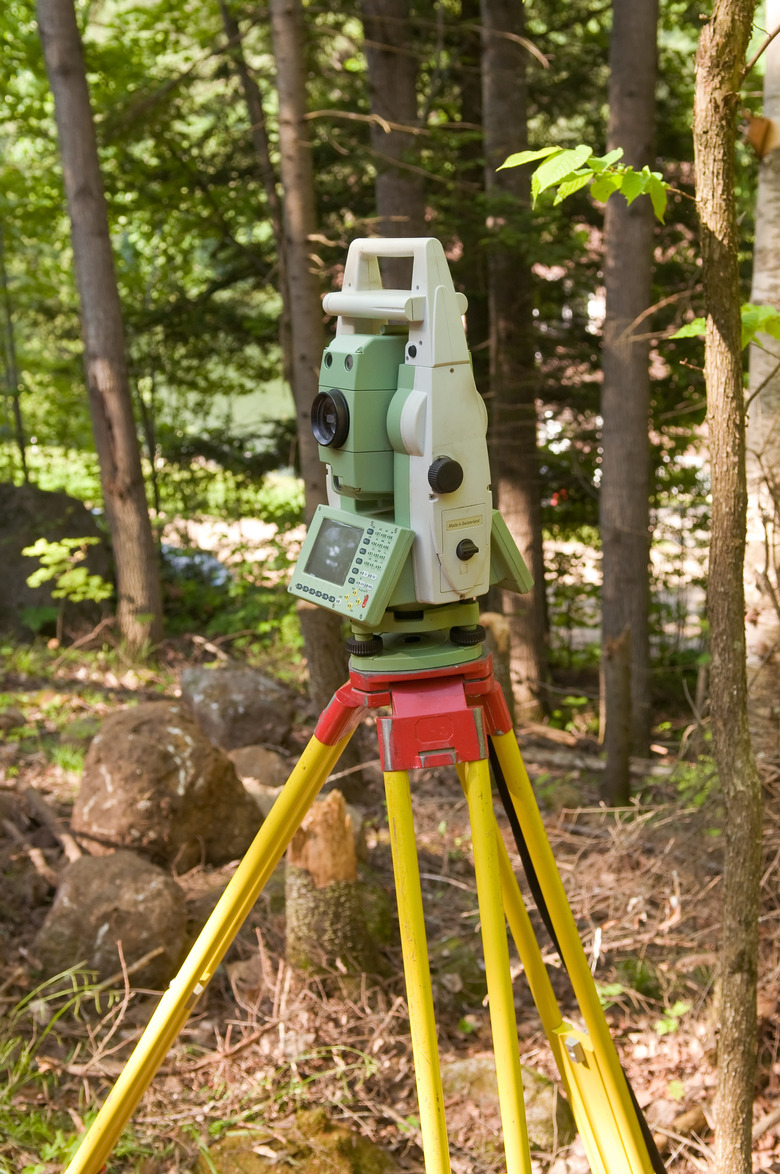How To Calibrate Theodolite
Surveying land for a potential building requires marking wall and foundation boundaries through precise angle calculations. In fact, many surveyors use theodolite electronic devices for viewing, or sighting, an area. These devices provide accurate angle readings for determining structural dimensions and property boundaries. However, the theodolite cannot offer precise readings unless it is calibrated periodically, especially if the job site has excessive machine vibration and wind.
Step 1
Place the theodolite on a roughly leveled tripod. Verify that the tripod's legs are firmly pressed into the ground for stability.
Step 2
Level the theodolite with its base-leveling screws by observing the base's level bubble. Make sure that the bubble is perfectly centered in the viewable area.
Step 3
Set a target up approximately 300 feet away. The target should resemble a plus sign or crosshairs.
Step 4
Look through the theodolite's eyepiece. Align the theodlite's internal crosshairs with the target's crosshairs. Note the vertical angle displayed on the theodolite's front panel.
Step 5
Remain standing in the same position. Turn the theodolite around. Spin the eyepiece until the user can view the target again without moving the position.
Step 6
Repeat step 4. The vertical angles should match exactly. If the vertical angles do not match, reset the theodolite's electronic parameters with the reset button, effectively calibrating the theodolite to new precise values.
Step 7
Repeat steps 4 through 6 for the horizontal angle calibration.
Step 8
Test the theodolite with a set of known angle values, such as at a surveyor's baseline. The angles should match the known values.
Things Needed
- Theodolite
- Tripod
- Target
TL;DR (Too Long; Didn't Read)
Each theodolite manufacturer uses a different button, or buttons, for resetting the calibration values. Consult the owner's manual for specific model instructions. Some calibration resets require pressing several buttons in a sequence, preventing unintentional calibration changes while working in the field.
Warning
Do not attempt to calibrate an obviously damaged theodolite, especially if the outside housing is cracked or broken. Damaged instruments must be evaluated by a professional repair technician. Sensitive optics may need internal physical adjustments, rather than a simple electronic calibration adjustment.
Cite This Article
MLA
Rodriguez, Amy. "How To Calibrate Theodolite" sciencing.com, https://www.sciencing.com/calibrate-theodolite-12118790/. 24 April 2017.
APA
Rodriguez, Amy. (2017, April 24). How To Calibrate Theodolite. sciencing.com. Retrieved from https://www.sciencing.com/calibrate-theodolite-12118790/
Chicago
Rodriguez, Amy. How To Calibrate Theodolite last modified March 24, 2022. https://www.sciencing.com/calibrate-theodolite-12118790/
